Review coming soon
Now and Then – the last Beatles song
Review coming soon
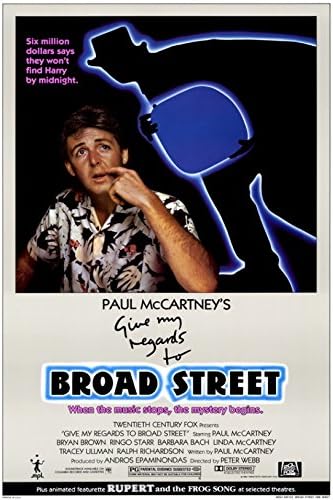
Give My Regards To Broad Street is an absolute blast, but only if you adopt the following strategy. Every time you find yourself scratching your head at an illogical plot point or a random sequence that appears to have nothing to do with the rest of the film, repeat this mantra: ‘Paul is the Beatle King, he can do anything’. Accept that, because of his song writing genius, McCartney had earned the absolute right to do what the hell he liked with his expensive, self indulgent folly of a film and you will have a very enjoyable 1hr and 48mins.
Ignore the damning 20% Rotten Tomatoes score and the savage reviews (in his one star review, Roger Ebert said, ‘Broad Street supplies us with a fake crisis, paper-thin characters, and long musical interludes that have been photographed with a remarkable lack of style…the movie treads water with idiotic dream sequences’). Ignore that the film took $1.4mill at the box office but cost $9mill to make. You even have to put aside McCartney’s own opinion that trying to extend what was originally planned to be a one hour TV special (that makes sense; Broad Street shares the rambling, illogical and episodic nature of Magical Mystery Tour) to a feature length film just didn’t work. In Conversations with McCartney, he told author Paul Du Noyer, ‘A feature film has got to have some dynamics, some strength and depth. We didn’t really get round to that…There’s a couple of redeeming features about it, but it’s just not very good.’
Technically, that is true. If you’d paid good money to see the film at the cinema in 1984 you’d have every right to be bitterly disappointed and even to demand a refund. But as this is 2023, you can watch Broad Street for free on YouTube and any true McCartney fan won’t resent investing a little under two hours of their lives to do so.
Broad Street is like an updated Help! but far less offensive (thankfully, racial stereotyping and brownface actors do not feature this time around). Just substitute Ringo’s ring for stolen master tapes as the film’s McGuffin and Leo McKern’s dastardly Clang for John Bennet’s sinister Mr. Rath as the villain of the piece and you have the makings of a plot just about sturdy enough to support a string of musical numbers, dream sequences and dialogue scenes that are meant to represent one day in the life of a rock star.
There’s no real jeopardy and the resolution to the mystery of what happened to those missing tapes (apparently worth £5million; gosh, how thrilling) is laughably weak and not worth waiting for. McCartney, despite having cast himself in the lead role had apparently failed to take a single acting lesson since Help! (or Magical Mystery Tour). So why is Broad Street worth your time?
The first and most obvious thing is the music. Who doesn’t want to watch McCartney sing Beatles classics including ‘Yesterday’ and ‘Here There and Everywhere’ with George Martin looking on from the studio control room (where Geoff Emerick is playing the recording engineer) while Ringo clowns around in the background, trying to find a pair of brushes to play his drums with that you know he’s going to locate just as McCartney plays a final chord.
There’s a brilliant set piece that brings the otherwise rather ordinary song ‘Ballroom Dancing’ to vibrant life, with an all star band that includes Ringo, Dave Edmunds, Chris Spedding and John Paul Jones strutting his stuff in a way he never got the chance to in Led Zeppelin. With a touch of very 80s-style androgyny, Paul and Linda face each other across upright pianos, dressed in matching teddy boy-style blue drape suits. Similarly ‘Not Such a Bad Boy’, which sounds unremarkable when heard on the soundtrack album makes a lot more sense when you see it played with gusto in a faux rehearsal set up with Ringo, Edmunds and the always effortlessly cool Spedding. McCartney looks like he’s having a ball and therefore so do we.
Even the utterly barmy staging of ‘Silly Love Songs’, with the entire band dressed in none-more-80s Toyah-esque garb and Jeffrey Daniel from Shalamar moonwalking and miming out front is a hoot (re-recorded for the film, the version features some fantastically funky playing from Brother’s Johnson bass man Louis Johnson, although he doesn’t appear in the film). While the period costume ‘Elanor’s Dream’ sequence, set to an extended orchestrated version of ‘Elanor Rigby’ doesn’t make an awful of sense, it does at least look grandly cinematic (it’s also reminiscent of the fantasy sequences in Led Zeppelin’s concert film The Song Remains the Same).
It’s also fascinating to see a glimpse of London’s past. By the early 90s, Butlers Wharf near Tower Bridge, where the rehearsal scenes are set, would be gentrified with pricy loft apartments and expensive restaurants, but in the early 80s it was still mostly derelict. A few years after filming, Broad Street railway station, where the film’s, er, ‘climatic’ scene is set, was closed and replaced by what is now Bishopsgate. The closure by the way was due to travellers switching to the London Underground and not fall out from its association with McCartney’s less than magnum opus.
As well as the musical legends mentioned above, the film’s cast includes everyone from Shakespearean actor Ralph Richardson to wrestler Giant Haystacks, comedian Tracy Ulman and Aussie star Bryan Brown (you may have seen him juggling shakers behind the bar with Tom Cruise in Cocktail) and a ton of British character actors such as Philip Jackson and Christopher Ellison which all adds to the entertainment value, at least for viewers of a certain age.
Watching Broad Street, it’s pretty obvious why McCartney decided not to pursue a second career in screenwriting and hasn’t made another feature film since (losing £7.6million probably helped in that particular decision making process). But fans should be glad that he gave it a go, however messy and idiosyncratic the results. The film has a kind of mad energy that keeps your eyes fixed to the screen. It’s never boring because you never quite know what’s going to happen next. While I’d never recommend it to the average viewer, for true Beatle-believers it’s a must watch. Just keep the mantra in mind, ‘Paul is the Beatle King, he can do anything’.
Beatles Handbook rating: 4 stars
Buy the album: Give My Regards to Broad Street
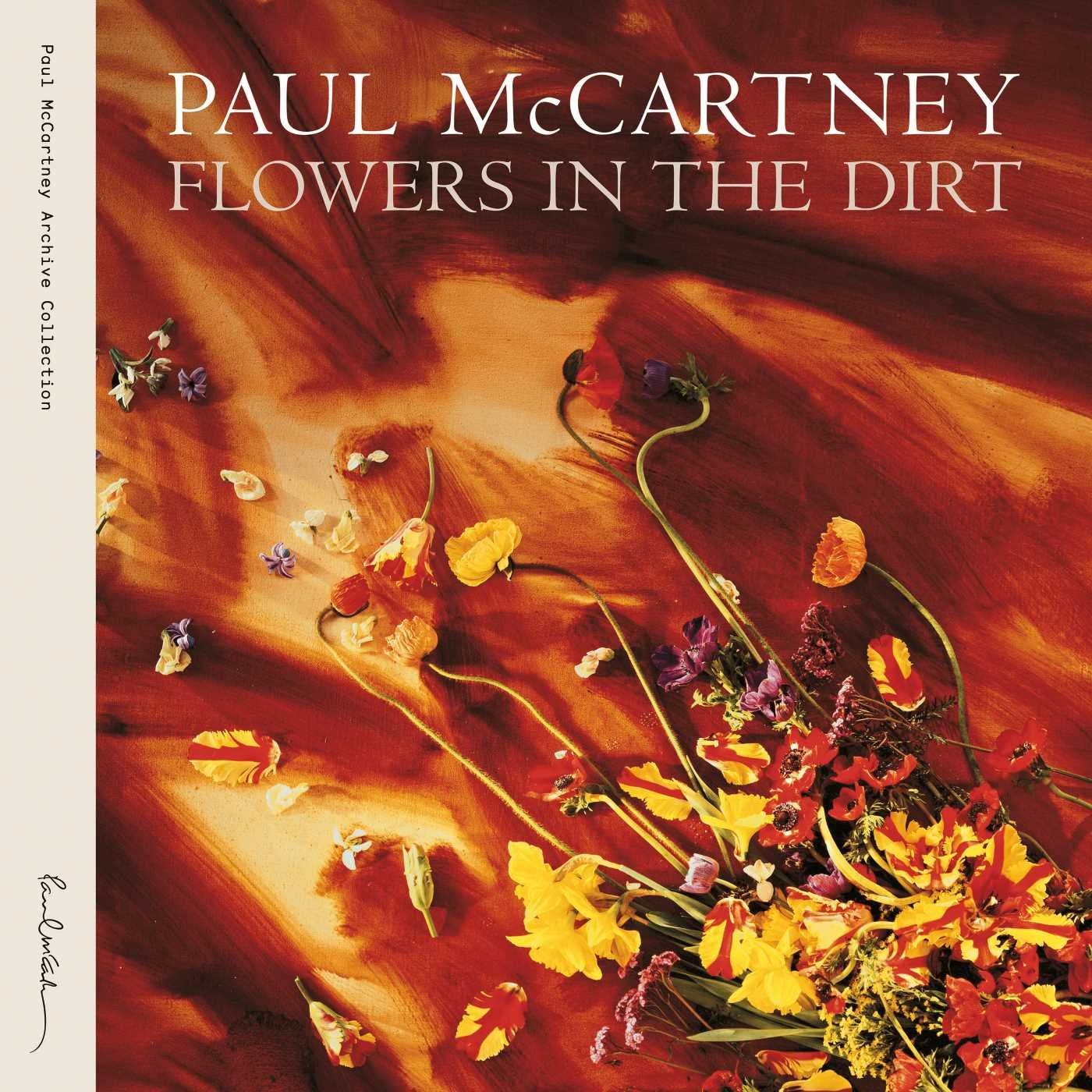
The 80s were a creatively fecund time for McCartney. In full magpie mode, he took inspiration from a variety of musical styles – the emerging electronica scene, funk, soul, folk and 50s rock and roll – and found either creative or commercial success (and sometimes both) with all of them, racking up 6 top 10 albums in the UK, 6 top 30 albums in the US, 11 top 10 singles in the UK (5 of them number 1s) and 6 top 10s in the US (including 3 number 1s).
But equally, the 80s were a testing time for Macca. As Jeff Slate noted in his 2017 Esquire article that coincided with the release of the Archive Collection edition of Flowers in the Dirt, the 80s saw, ‘a pot bust in Japan, the break-up of Wings, the assassination of John Lennon, a failed venture into filmmaking, a floundering recording career, public and private squabbling with George Harrison and Ringo Starr, and Michael Jackson buying the rights to his beloved Beatles songbook out from under him’.
With all that going on (although, given the above chart stats, I don’t agree that McCartney’s recording career was ‘floundering’) it’s no surprise that listening through McCartney’s 80s albums can be something of a chore. Despite some very high watermarks – ‘Waterfalls’, ‘Coming Up’, ‘Say Say Say’, ‘No More Lonely Nights’, ‘Here Today’, (and even the pomp-pop of ‘Tug of War’ and ‘Pipes of Peace’) – the albums can be typically characterised as extremely uneven with a few great tracks a piece and an awful lot of filler. McCartney II and the throwaway but fun Choba B CCCP are the partial exceptions that prove the rule.
In a 1987 NME interview, McCartney admitted ‘I’m superstitious. I think that if you stop, you might never come back’. Much of his 80s output sounds like McCartney writing and recording something, anything, simply to avoid stopping and disappearing into the pop void.
But all that changed with Flowers in the Dirt, the strongest McCartney album since At The Speed of Sound more than a decade earlier. In a filmed interview for Put It There: The Making of Flowers in the Dirt, McCartney says the album’s consistent high quality is due ‘mainly ’cause we’re going out on tour, we kinda probably took a little bit more care over this one. I just don’t want to get stuck out in America somewhere on tour flogging an album that we don’t like.’
There was of course another reason. In 1987, McCartney began a short-lived writing partnership with Elvis Costello that, given the results on Flowers, reinvigorated McCartney’s creativity. McCartney himself compared the collaboration to his partnership with Lennon; a huge compliment. Costello’s raw and radical vision for the record was at odds with McCartney’s desire to make a more polished product and so only four co-writes made it on to the album (other tracks appeared over time on later McCartney and Costello solo records). But even if we were cheated on a complete album’s worth of material from the pair, what we do get is impressive.
The bold a cappella harmonies that open ‘My Brave Face’, and the album, are almost confrontational. McCartney seems to dare his critics to deny him the right to plunder his own musical legacy, with a nimble, melodic bass line played on that Höfner 500/1 as a bonus F.U.. It’s a tantalising taste of what The Beatles might have sounded like had they made it unscathed to the end of the 80s.
There’s more than a hint of Lennon and McCartney lyrical yin and yang about the memorable duet ‘You Want Her Too’. As McCartney pointed out in the NME interview ‘Elvis, he reminds me a little of John. Working with him is very similar. We wrote one song and thought ‘God, this is just like The Beatles’. There seems to be more of Costello’s dark edge in ‘Don’t Be Careless Love’, a sweet love song over which illogical anxiety casts its long shadow (‘Saw your body/rolled up in a rug/chopped into two little pieces/By some thug….But in the morning light…you’re by my side).
‘That Day Is Done’, written about the passing of Costello’s maternal grandmother, is the album’s emotional centrepiece. He told Esquire magazine that it ‘just came tumbling out in a lot of dense images that were very vivid and real to me, but perhaps not so comprehensible to the listener. Paul did something very subtle but crucial in making that song pay off to a big, plain spoken chorus, after I’d piled up all of these lines in the verses, including the one that yielded the album’s title.’
Perhaps buoyed by such a productive partnership (the above mentioned re-issue is well worth investigating for additional songs including the ‘Lovers That Never Were’, ‘Tommy’s Coming Home’ and ‘Twenty Fine Fingers’ that are easily as good as the tracks that made it to the original release. For a full appraisal of the McCartney/Costello demos, this article at reclinernotes.com is excellent), McCartney’s solo writes are uniformly excellent. ‘Distractions’, ‘Figure of Eight’ and ‘We Got Married’ are all top drawer stuff. There is the bafflingly awful white man’s reggae of ‘Too Many People’, but that’s just part of the eternal mystery of McCartney; the man that can write something as sublimely strange and haunting as ‘House of Wax’, to take just one random example, is the same man that can compose awful dreck like ‘We All Stand Together’.
It seems a shame that McCartney has never worked with Costello again given the quality of Flowers, but perhaps the echoes of Lennon and The Beatles were just a bit too strong for him. Given the breadth of his work in the 90s and beyond, with his classical compositions and his more experimental work with Youth as The Fireman, it seems McCartney had his sights fixed firmly on the future rather than looking back to the past.
Beatles Handbook rating: 5 stars
Essential tracks
My Brave Face
You Want her Too
That Day Is Done
Buy this album: Flowers in the Dirt
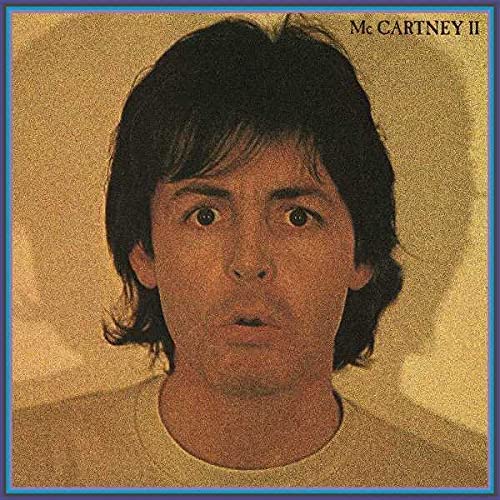
Echoing McCartney a decade earlier, McCartney II is a completely solo, home-recorded album that explores the possibilities offered by the then new-fangled technology of synthesisers and sequencers. Away from the band setting of Wings, which McCartney was becoming increasingly frustrated by, he seemed to relax and allow his creativity to flow. The results are delightful, if varied in quality (well, this is a Paul McCartney record after all). ‘Temporary Secretary’ sounds like your mad middle-aged uncle covering D.A.F., but in the best possible way; the unfortunately titled ‘Frozen Jap’ could be a Kraftwerk outtake, and ‘Front Parlour’ might be the electronic theme tune to a forgotten 80s children’s TV show.
‘Summer’s Day Song’, with it’s sweet melody, sophisticated chord structure and minimalist synthetic arrangement is the bridge between the album’s purely electronic tracks and those with more traditional instrumentation and arrangement. Despite the presence of bass, drums and guitar, ‘Coming Up’ still manages to be a slightly batty fusion of four-to-the-floor funk and 1920s dance band horns; it remains an irresistibly unusual groove and an album highpoint, along with ‘Waterfalls’, one of McCartney’s most beautiful and tender love songs.
So, not a perfect record, but a huge amount of fun. The extended Archive Collection edition is also well worth exploring.
Beatles Handbook rating: 4 stars
Essential tracks
Coming Up
Waterfalls
Temporary Secretary
Buy this album: McCartney II
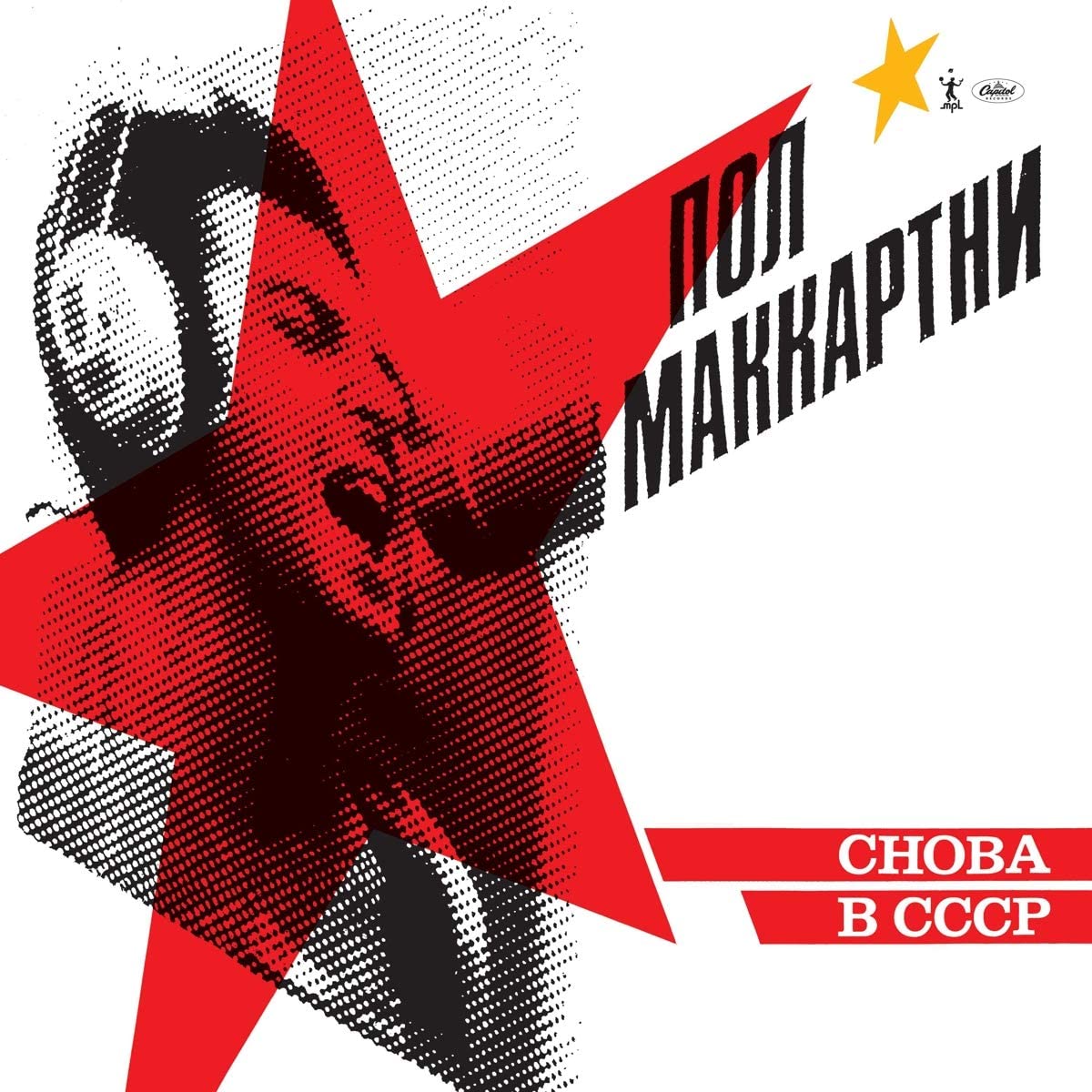
CHOBA B CCCP (‘Back In The USSR’) is stripped back palate cleanser after the production excesses of Press Play. Recorded live in the studio with a top band that included lauded Pirates guitarist Mick Green, Macca rattles through some rock’n’roll favourites and sounds like he is having a ball doing it. Not an essential album by any means, but in the the context of McCartney’s variable 80s output, a very welcome addition to the catalogue.
Beatles Handbook rating: 3 stars
Essential tracks
Twenty Flight Rock
Lucille
Lawdy, Miss Clawdy
Buy this album: Choba B CCCP
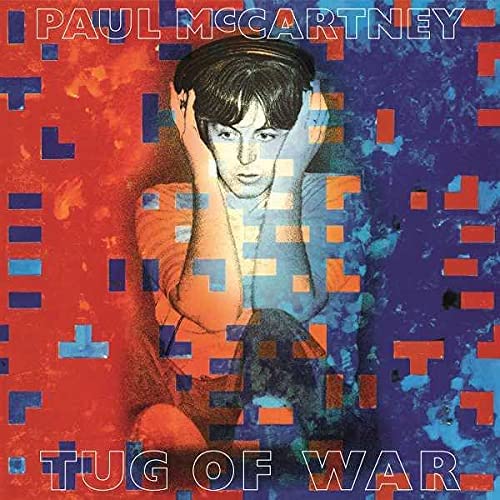
Recorded in the wake of Lennon’s death, Tug of War contains the moving tribute ‘Here Today’ to his former bandmate. Further Beatles connections in the form of George Martin’s production and Ringo Starr contributing drums and backing vocals on several tracks can save this from being an uneven and incoherent collection of songs. The almost endless personnel list includes everyone from Stanley Clarke and Steve Gadd to Andy Mackay and Carl Perkins (and Stevie Wonder of course) which reflects the album’s plethora of styles. The title track sounds much better now than it did at the time but still suffers a little from 80 bombast and grand statements, as well as some truly terrible lyrics and the unfortunate sub-high school English student rhyming of grumble/tumble/crumble.
The album also contains one of the worst songs ever composed in ‘Ebony and Ivory’. I’m sure some clever music critic somewhere has managed to argue its true artistic merits, but the reality is that this collaboration with Stevie Wonder is a mawkish and inane song with no redeeming features. Whereas the direct simplicity of ‘Silly Love Songs’ works wonderfully, taking a similarly naive approach to race relations in ‘Ebony and Ivory’ results in one the worsts clunkers in the entire McCartney canon. Somehow, two of the finest musicians and songwriters of all time manage to cancel each other out. At least we have ‘What’s That You’re Doing’, an absolute belter of a funk/pop tune to show what they could achieve together.
‘Wanderlust’ apart (a gospel-influenced, soaring ballad with a nice brass arrangement), the album is dragged down by too much ballast in the form of forgettable pop ditties like ‘Take it Away’, ‘Somebody Who Cares’ and the horrible comedic um-pah of ‘Ballroom Dancing’.
McCartney is a hard worker, no one could dispute it. Seven albums (plus a movie) in one decade is ample evidence of that. But listening to Tug of War makes you wish he’d taken it a bit easier, recharged the old song writing batteries and come up with something just that bit better.
Beatles Handbook rating: 2 stars
Essential tracks
Here Today
Tug Of War
What’s That You’re Doing
Buy this album: Tug of War
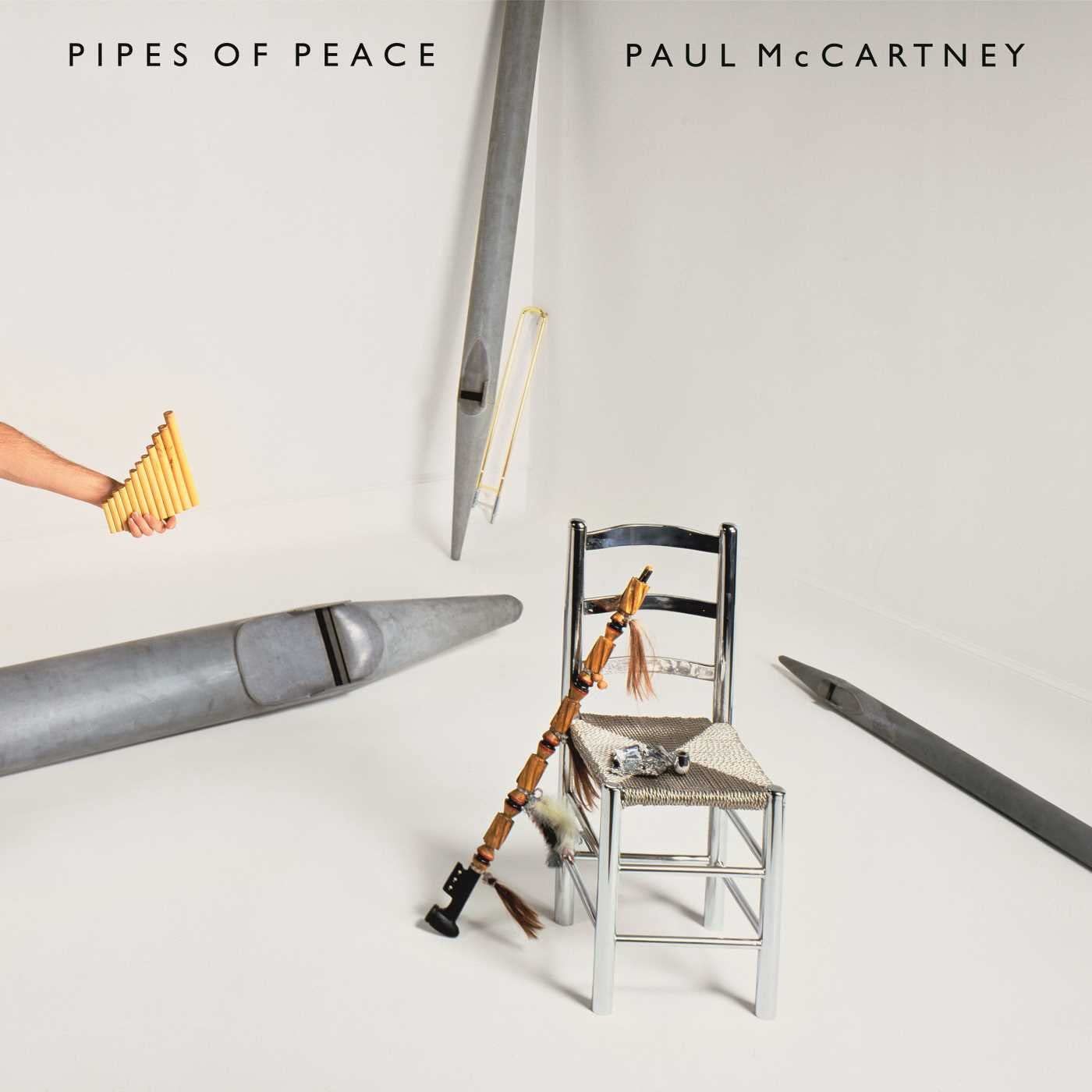
The title track is a finely crafted piece of catchy pop with some nice turns of phrase (‘Will the human race/be run in a day’) with a straightforward pacifist message. The remainder of the album is mostly made up of a vaguely pleasing wash of white pop/soul/funk (‘So Bad’ and ‘Through our Love’ are relative stand outs) that only catches fire when Michael Jackson gets involved; ‘Say Say Say’ is an enduring pop classic with an earworm of a melody and ‘The Man’ is just a great tune that features a sweet-as-honey Jackson vocal performance. With too many filler tracks like the disposable ‘Tug Of Peace’, it’s hard to imagine listening to the whole album through very often, if at all.
Beatles Handbook rating: 2 stars
Essential tracks
Say Say Say
The Man
Pipes Of Peace
Buy this album: Pipes of Peace
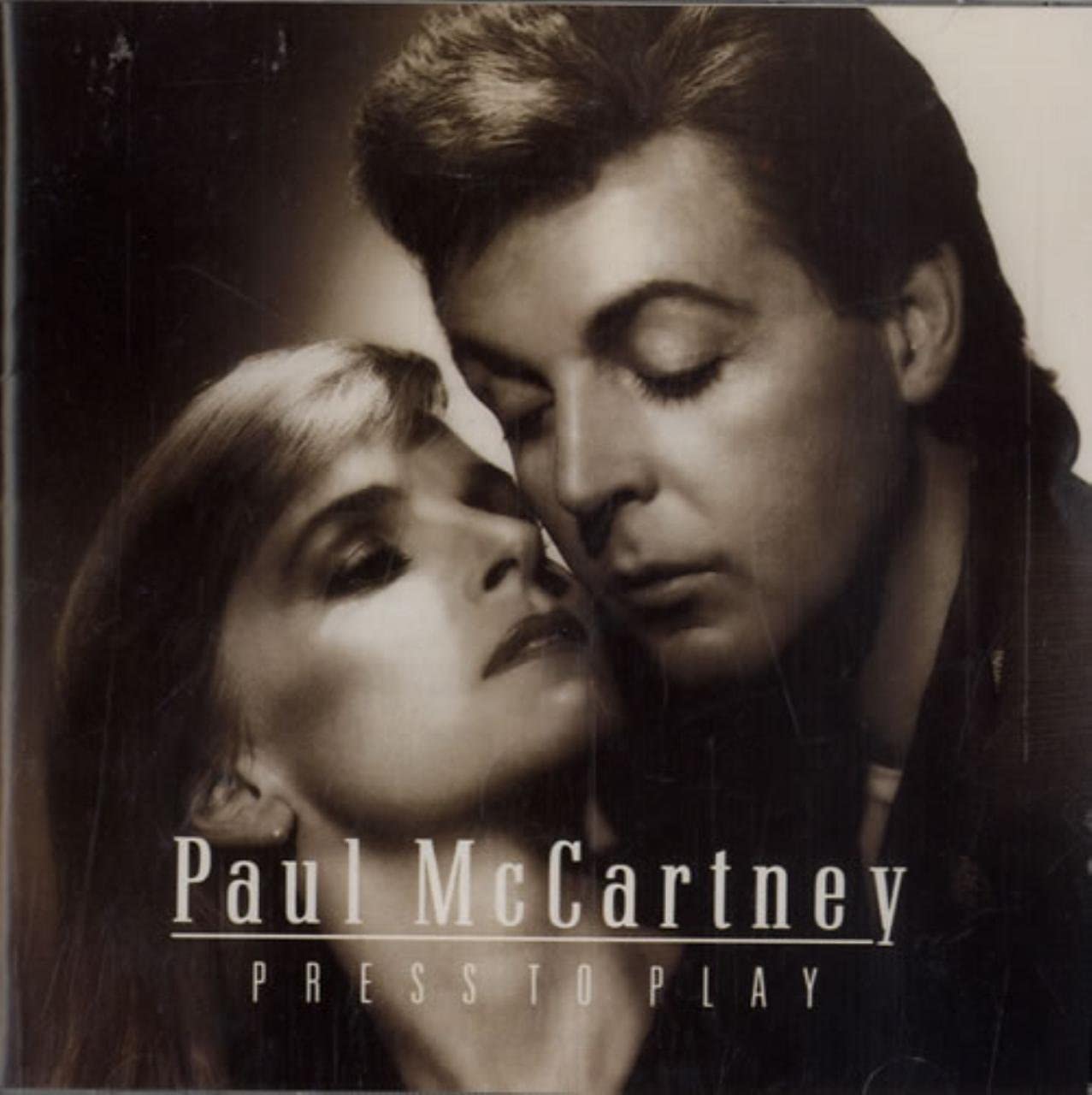
In which McCartney gets well and truly Hugh-Padgham-ed. A terribly dated, none-more-80s exercise in slick over-production. Unusually, McCartney seems to be relying on sound textures to create interest rather than solid song writing, despite help on a number of tracks from the estimable Eric Stewart. The cod-reggae of ‘Good Times Coming’ is a low point, the perfect, shiny pop of ‘Press’ is a real high. The solo-penned ‘Only Love Remains’ is beautiful, a true McCartney classic love song.
Beatles Handbook rating: 2 stars
Essential tracks
Only Love Remains
Press
However Absurd
Buy this album: Press to Play
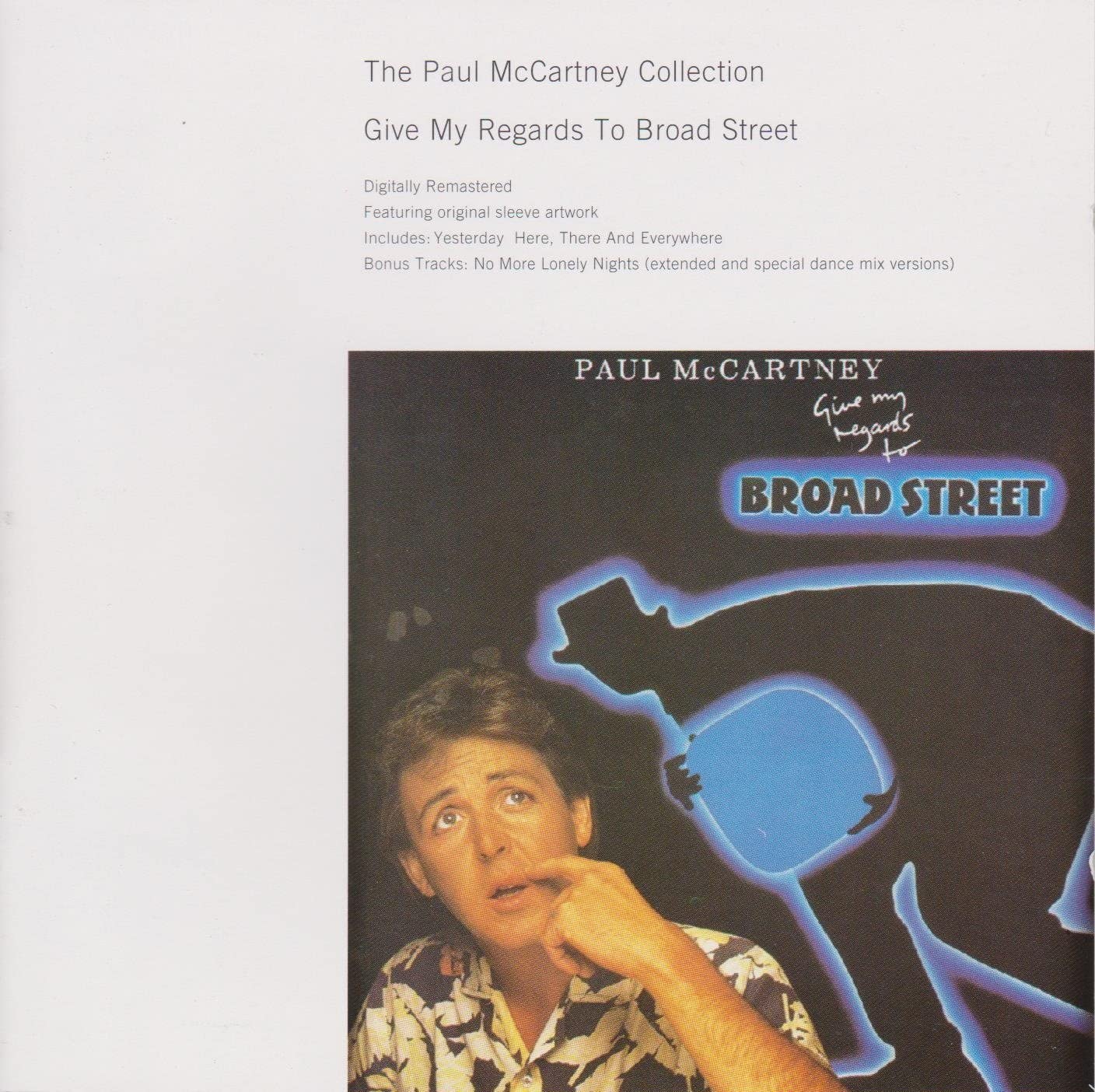
The soundtrack to McCartney’s ill advised post-Beatles foray into major motion pictures is mostly composed of re-recordings of previously released Beatles and solo McCartney songs. It’s a rum old mix, with stone cold classics like ‘Here There and Everywhere’ rubbing shoulders with lesser McCartney compositions such as ‘Ballroom Dancing’. The only new tracks on the album are the the excellent pop ballad ‘No More Lonely Nights’ (one of McCartney’s best) the average, mild mannered rocker ‘Not Such a Bad Boy’ and the faux-punk ‘No Values’ (*shrugs*). There’s an extended symphonic reworking of ‘Eleanor Rigby’ called ‘Eleanor’s Dream’, which is certainly interesting but hardly essential. McCartney completists will want an updated ‘Yesterday’ (even if it does sound very similar to the original) but others need not apply.
Beatles Handbook rating: 1 star
Essential tracks
No More Lonely Nights
Buy this album: Give My Regards To Broad Street
1. All Things Must Pass
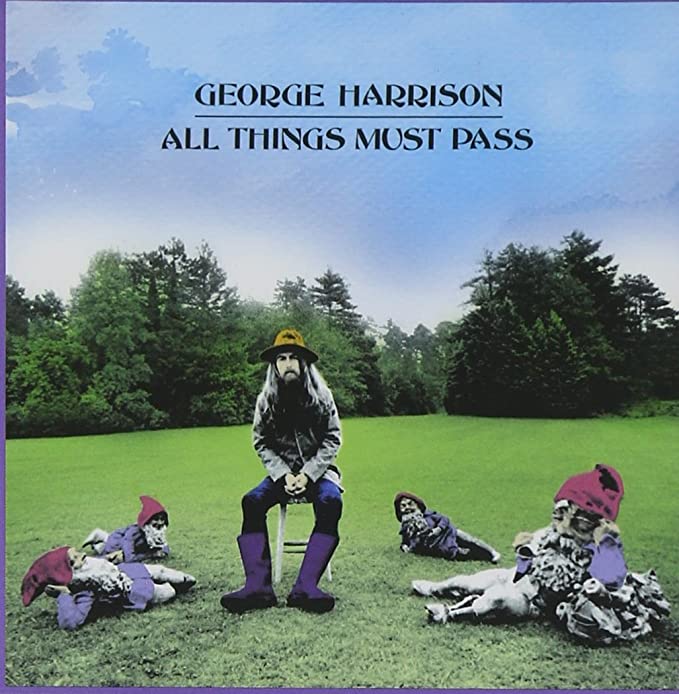
Here comes little Georgie Harrison with a great big statement of a triple album set. He’s got his two albums worth of weirdo electronica experimentation out of his system since The Beatles finished and he’s ready to lay down all those songs Paul and John turned their nose up at. And what songs they are. All that pent up frustration that was made so clearly visible in the Get Back footage is unleashed to magnificent and enduring effect. All Things Must Pass is not just George Harrison’s finest solo album, it’s the best solo album ever recorded by a Beatle, and ‘All Things Must Pass’ is the finest solo Beatle song.
Harrison assembled a who’s who of rock to make the record, including Ringo, Billy Preston, Eric Clapton (and the rest of his alter ego band Derek and Dominos: Bobby Whitlock on keyboards, Jim Gordon on drums and Carl Radle on bass), Peter Frampton and Ginger Baker among many others. It was produced by Phil Spector and the opening track ‘I’d have You Anytime’ was co-written with Bob Dylan.
The set’s 23 tracks run the gamut from rock and R&B to gospel, country and folk. While it is a sprawling collection, there is a cohesiveness to it that makes listening to all six sides (or streaming it in its entirety) a real joy. Are the final two sides of jams essential? Well, maybe not, but they have enough energy and invention to make them enjoyable. I for one would miss them if they weren’t there.
It’s hardly going out on a limb to call All Things Must Pass a masterpiece. It has been included in countless best albums lists including Rolling Stone magazine’s 500 Greatest Albums of All Time best albums of all time, and in 2014 All Things Must Pass was inducted into the Grammy Hall of Fame.
Essential tracks
All Things Must Pass
My Sweet Lord
Beware of Darkness
What Is Life
Wah-Wah
If Not For You
Beatles Handbook rating: 5 Stars
Buy this album: All Things Must Pass
2. Living in the Material World
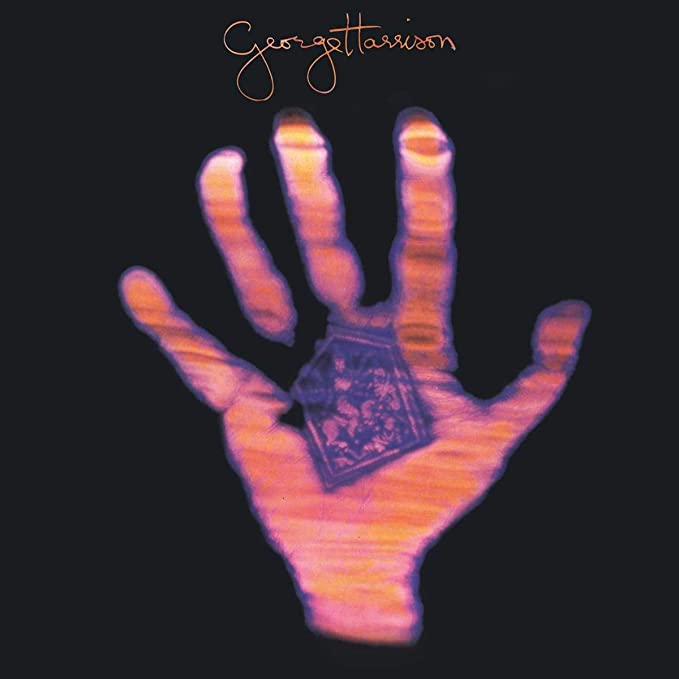
After completely emptying the tank for All Things Must Pass, Harrison struggled to follow it up, proving it was a one-off, solely fuelled by his backlog of Beatle’s cast offs, right? Wrong. Living in the Material World might be less ambitious than All Things, as a single album with far fewer contributors and a more narrow and concentrated musical style, but it’s a very strong successor that proves Harrison’s song writing skills and melodic ear were every bit as honed as McCartney’s or Lennon’s.
Let’s overlook the clunker that is ‘Sue Me, Sue You Blues’ (Harrison in full mithering mode, bemoaning his legal costs in the wake of the Beatles break up – someone really should have said something to him) and instead concentrate on all the wonderful, spiritually charged music the album otherwise contains. There is strong competition for most-beautiful-Harrison-composition in the form of the yearning ‘Who Can See It’ and elegiac ‘The Light That Has Lighted The World’, but the winner must be ‘Be Here Now’ with an elegantly sparse arrangement that highlights Harrison’s mesmerising guitar playing and heartfelt, lilting vocal.
But ‘Be Here Now’ might not even be the best track on the album, such is the consistent quality of Harrison’s writing and performing. ‘The Day The World Get ‘Round’ has a stronger hook, ‘Try Some Buy Some’ a slightly heftier emotional punch. ‘Living In The Material World’ is an earworm of a pop hit and ‘Give Me Love (Give Me Peace on Earth) with it’s soothing slide guitar, is a gentle stroll through a sun dappled meadow with a loved one.
So, Living In The Material World doesn’t quite reach the dizzying height of All Things, but then very little in the rock and pop canon has. It does however further establish Harrison as an all time great recording artist in his own right outside of his work with his old band. An absolute delight and one to be cherished.
Essential tracks
Give Me Love
Be Here Now
Living In The Material World
Beatles Handbook rating: 4 Stars
Buy this album: Living in the Material World
3. Cloud Nine
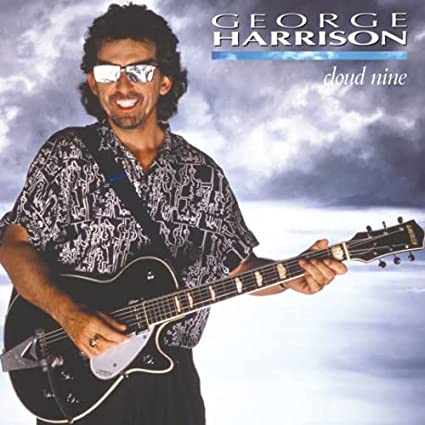
A fine, vital return after a 5 year break. Harrison is eased into the late 80s high production-value pop/rock area by Jeff Lynne’s steady production hand. From the taught blues funk of the opening title track to the pop joy that is ‘Got My Mind Set On You’ (a cover of Ruby Clark’s 1962 song), Cloufn Nine is a blast. Why no modern boy band has covered ‘That’s What It Takes’ is a mystery.
Given that uber-Beatles fan Lynne is at the helm, it’s no surprise to find some nods, overt or otherwise, to Harrison’s old muckers. ‘When We Was Fab’ is indeed fab, with its oblique, sarky lyrics and musical Beatles quotes including ‘I Am The Walrus’ and ‘Within You Without You’. The video, featuring Ringo Starr is a proper hoot too. And I swear there is more than a hint of Lennonesque rasp to the vocal ‘Fish On the Sand’.
As the last album released during Harrison’s lifetime, it’s a fitting finale (Brainwashed, released in 2002 was completed by Harrison’s son a year after Harrison’s death) with Harrison on top form again in all departments and embracing the future while slyly looking back to his illustrious past.
Essential tracks
Got My Mind Set On You
When We Was Fab
That’s What It Takes
Beatles Handbook rating: 4 Stars
Buy this album: Cloud Nine
4. Thirty Three & 1/3
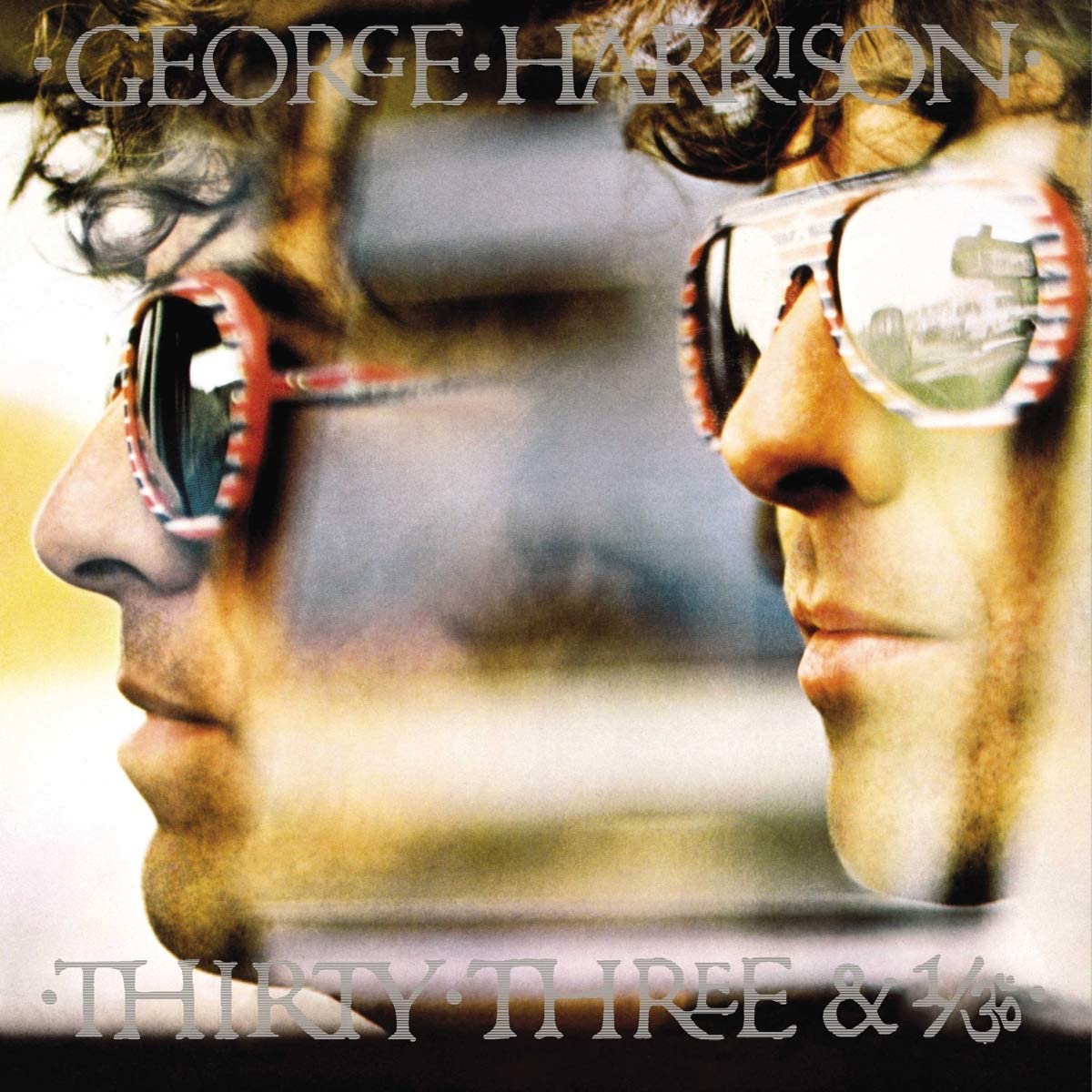
A very strong collection of tunes including the slap bass-driven Woman Don’t Cry For Me, the sublime white soul of Pure Smokey and the addictive pop hook of Crackerbox Palace.
Essential tracks
Crackerbox Palace
Woman Don’t You Cry For Me
Beautiful Girl
Beatles Handbook rating: 4 Stars
Buy this album: Thirty Three & 1/3
5. Extra Texture
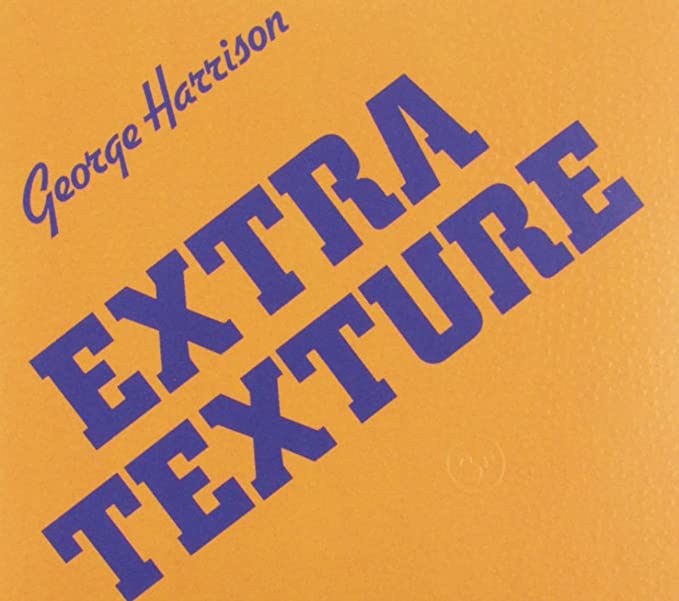
From the opening euphoric, sax-driven blast of pop joy ‘You’ to the closing surreal-rocker ‘His Name is Legs’, an album of varied delights.
Essential tracks
You
This Guitar (Can’t Keep From Crying)
His Name is Legs (Ladies and Gentlemen)
Beatles Handbook rating: 4 Stars
Buy this album: Extra Texture
6. Dark Horse
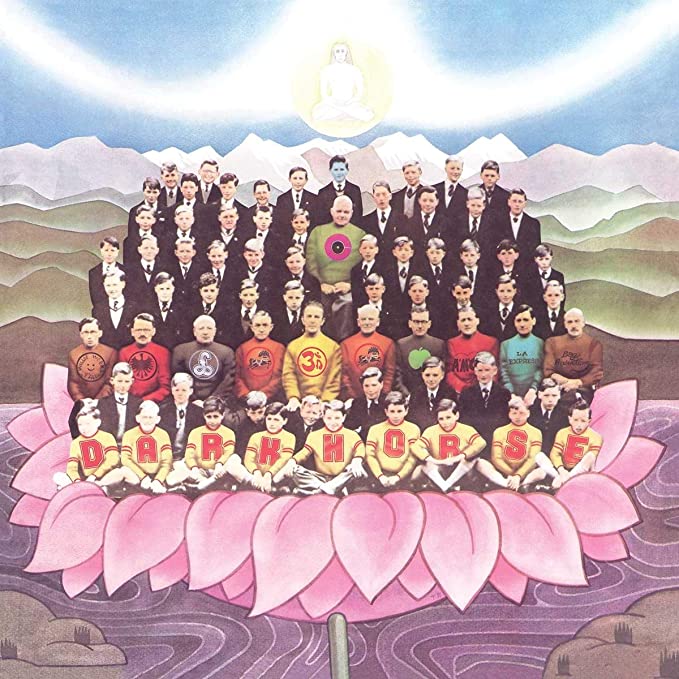
Memorable tunes and a successful mix of guitar-led pop ballads and white boy soul stylings make for a great album. The festive Ding Dong, Ding Dong is a Wizzard-style Christmas knees up.
Essential tracks
Dark Horse
So Sad
Far East Man
Beatles Handbook rating: 4 Stars
Buy this album: Dark Horse
7. Brainwashed
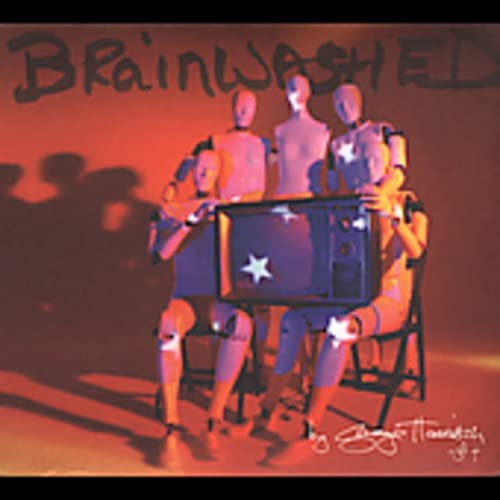
Recorded in the late 80s and 90s and finished following Harrison’s death in 2001 by his son Dhani and Jeff Lynne. A strong coherent collection with ‘Stuck Inside A Cloud’ a plaintive highlight.
Essential tracks
Stuck Inside a Cloud
Brainwashed
Looking For My Life
Beatles Handbook rating: 4 Stars
Buy this album: Brainwashed
8. Gone Troppo
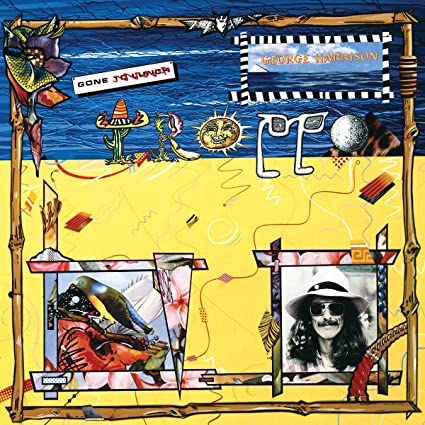
Bookended by the rousing pop of ‘Wake Up My Love’ and the haunting, mournful ‘Circles’, the album sags badly in the middle, despite a gleeful cover of doo-wop classic I Really Love You.
Essential tracks
Wake Up My Love
Circles
I Really Love You
Beatles Handbook rating: 3 Stars
Buy this album: Gone Troppo
9. Wonderwall Music
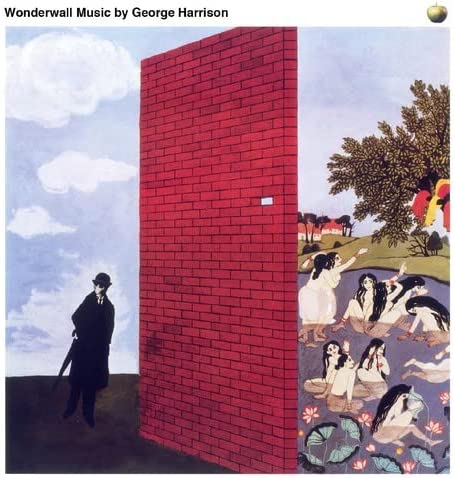
The first ever Beatles solo album is the all instrumental soundtrack to a psychedelic film starring Jane Birkin that incorporates classical Indian music. An interesting curio.
Essential tracks
Red Lady Too
Wonderwall To Be Here
Party Seacombe
Beatles Handbook rating: 3 Stars
Buy this album: Wonderwall Music
10. George Harrison
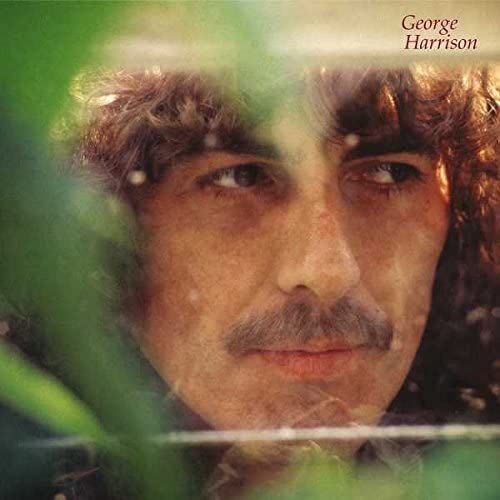
‘Here Comes the Moon’ is an interesting yin to ‘Here Comes the Sun”s yang, but otherwise a fairly ropey record, epitomised by the awful F1-themed ‘Faster’
Essential tracks
Love To Everyone
Here Comes the Moon
Not Guilty
Beatles Handbook rating: 3 Stars
Buy this album: George Harrison
11. Somewhere in England
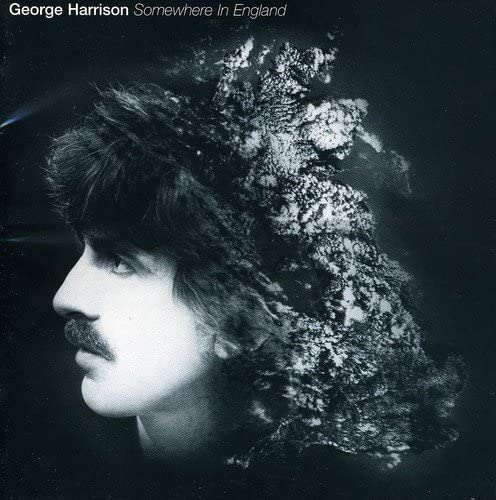
A lacklustre and uninspired album compounded by weedy production. Only the jaunty pop of Teardrops and the sombre drama of Baltimore Oriole make an impression.
Essential tracks
Teardrops
Baltimore Oriole
Beatles Handbook rating: 2 Stars
Buy this album: Somewhere in England
12. Electronic Sound
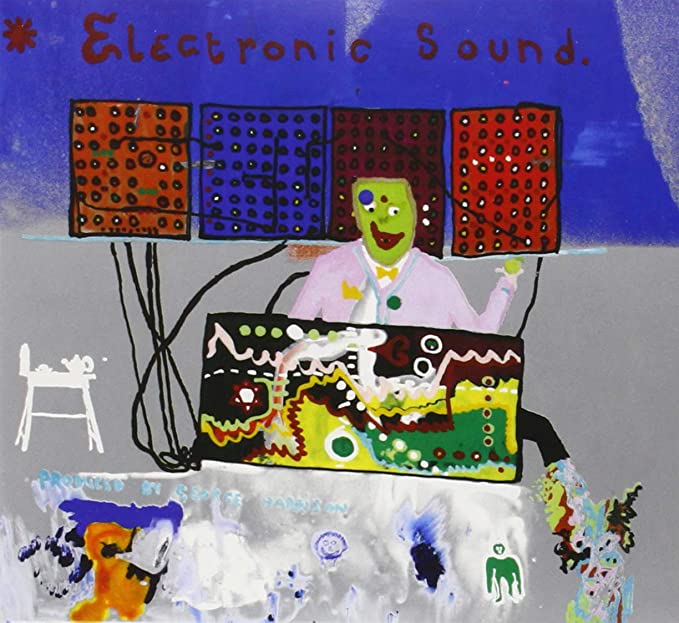
Two 20 minute tracks of patience-testing synth noodling. I’d love to know how many other people have actually listened to the whole thing. Zero fun.
Essential tracks
None
Beatles Handbook rating: 1 Star
Buy this album: Electronic Sound
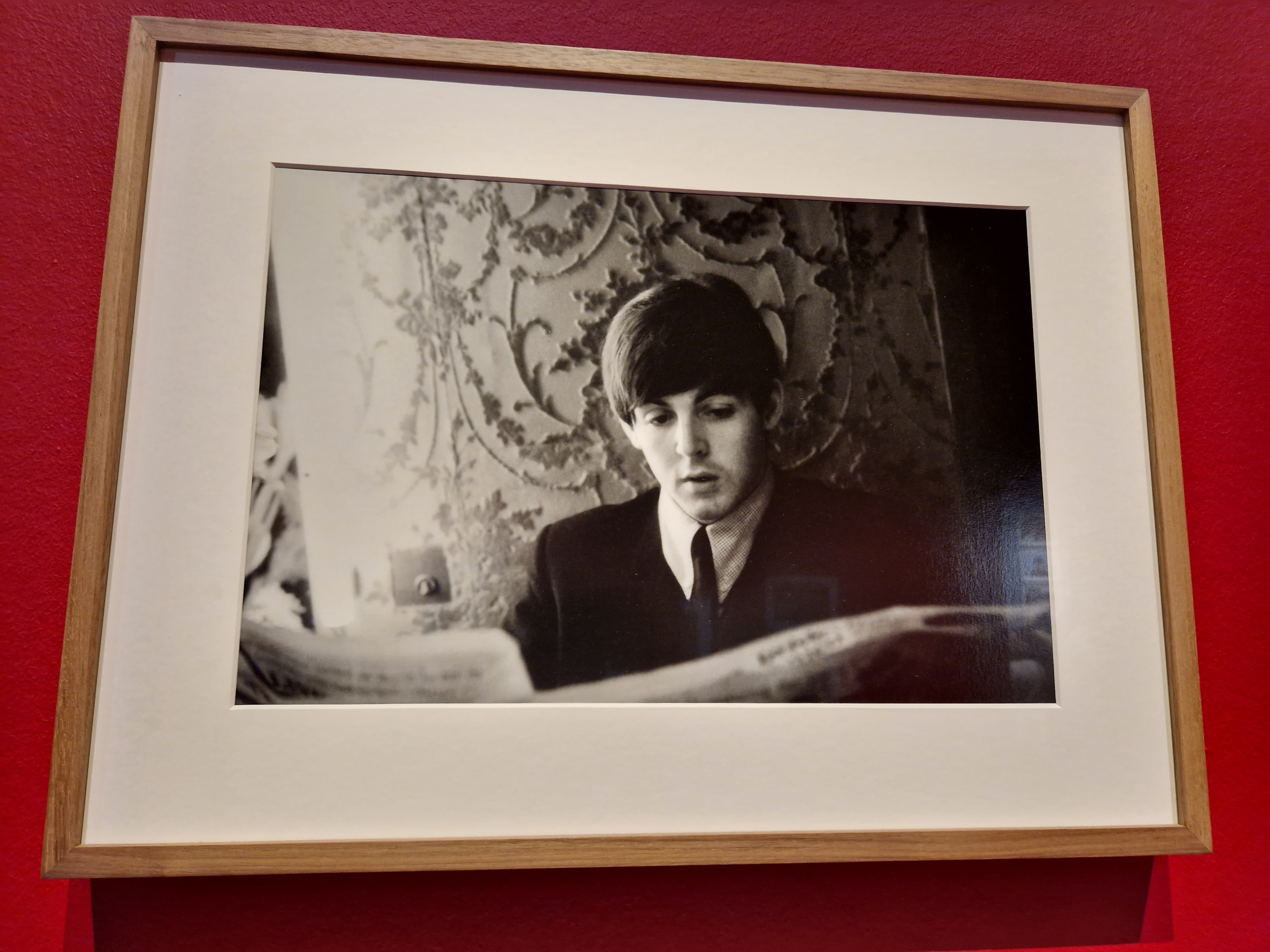
Eyes of The Storm is a magical, unmissable exhibition of 250 never before seen backstage pictures taken by Paul McCartney between November 1963 and February 1964. In an introduction to the exhibition, McCartney says that, ‘I’m not setting out to be seen as a master photographer, more an occasional photographer who happened to be in the right place at the right time’. Even if McCartney isn’t technically brilliant (although to my relatively untrained, photography ‘O’ level grade C eyes, the shots appear to be high quality stuff) he made the most of his unique position to capture his fellow Beatles and entourage on film like no one else could ever do.
There is an unequalled intimacy to McCartney’s candid portraits of Lennon, Harrison and Starr that is just beguiling. It’s as though the camera doesn’t exist; there’s no barrier between McCartney and his subjects who are seemingly captured at their most relaxed. His shots of Mal Evans and Brian Epstein are also wonderful. All of them appear in the first part of the exhibition which documents the band’s 1963 autumn UK tour, the filming of an episode of Juke Box Jury and It’s the Beatles for the BBC in Liverpool, The Beatles Christmas Show at the Astoria in Finsbury Park and their London Palladium shows in January 1964. The photographs of The Beatles hectic trip to Paris, also in January 1964 also contains some great images including Harrison dressed as a gendarme.
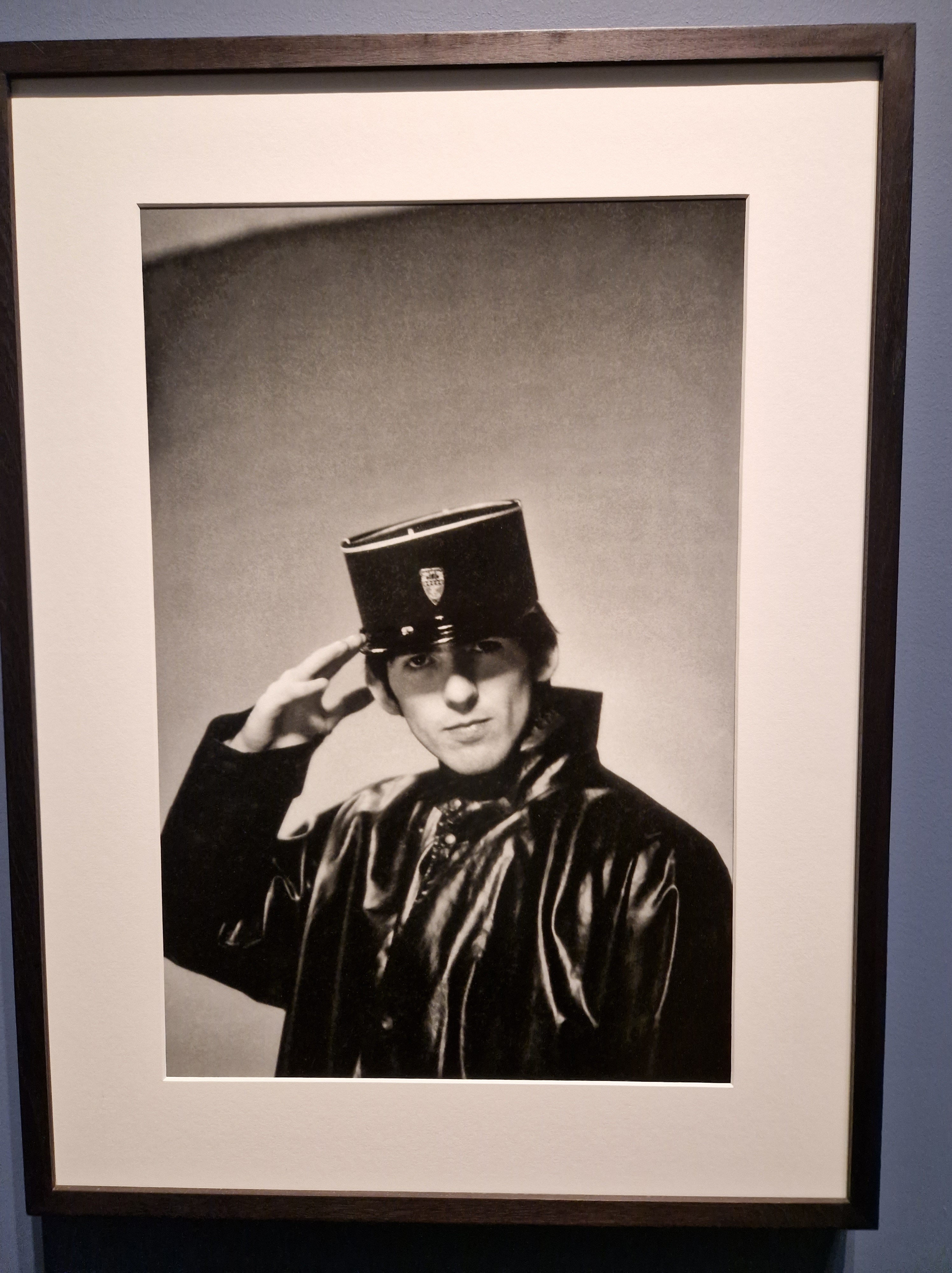
The exhibition is less successful when The Beatles make their first visit to America and McCartney turns his attention away from the band and towards ‘airport workers, the police and the press photographers’. While it’s interesting to get a inside-out view of Beatlemania, there are a few too many mundane snapshots. Things pick up when McCartney arrives in Miami and starts shooting in colour (there’s a specially commissioned film with a new score by McCartney playing in the Miami room which adds interest) although there is more than a hint of holiday snap to many of the pictures.
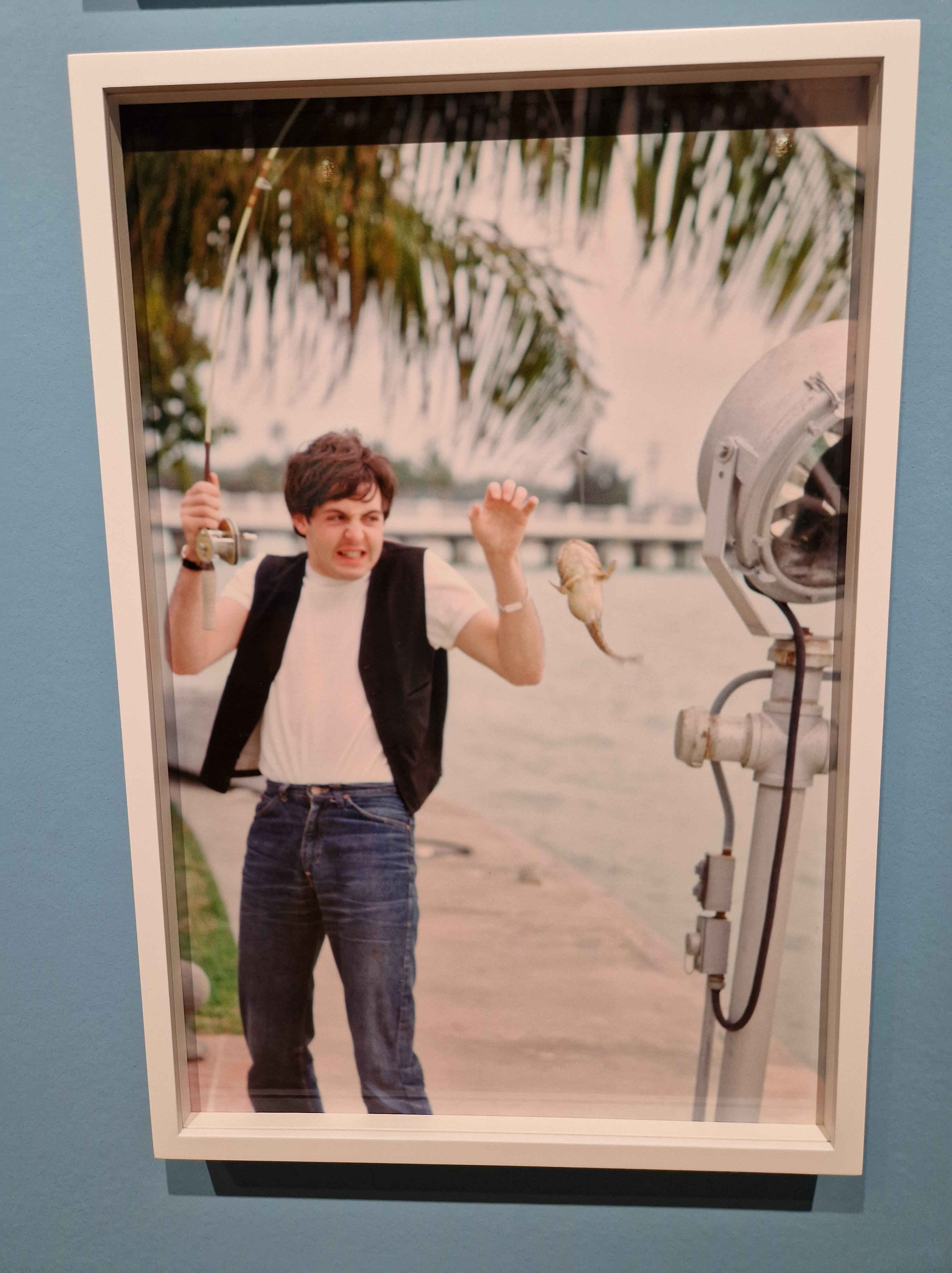
Despite these minor shortcomings, Eyes of the Storm is an absolute joy. I found myself grinning like an idiot for most of the hour I spent in the gallery. I would allow at least that to see the exhibition and more like 90 minutes to do it proper justice. The galleries were quite packed on a late Thursday afternoon so it’s probably worth going early morning if you can, I imagine this will be a popular show and rightly so. Any Beatles fan will absolutely love it.
Eyes of the Storm is on at the National Portrait Gallery until 1 October 2023. Click here for more information.